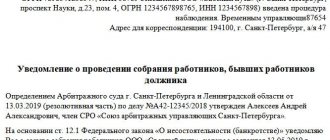published: 10/21/2015
Federal Law dated June 29, 2015 N 210-FZ “On Amendments to Certain Legislative Acts of the Russian Federation and Recognizing Certain Provisions of Legislative Acts of the Russian Federation as Invalid” introduced significant changes to Federal Law dated December 26, 1995 N 208-FZ “On Joint-Stock Companies” .
A significant part of the amendments concerns changes to the procedure for convening and holding general meetings of shareholders. Most of the changes will come into force on July 1, 2016. One half of the changes is due to the pressing issue of the urgency of using various information and communication technologies, the other half is due to the need to reduce the time frame for convening and holding shareholder meetings, and informing about the results of such meetings.
Using websites as an official source of information for shareholders of a non-public company.
The version of the Law on Joint Stock Companies, applicable from 07/01/2016, provides for the possibility of providing information about a general meeting of shareholders in other ways, for example, using the website of the joint stock company, available on the Internet, as well as by sending a notification by e-mail or as an SMS message. In this case, the details contained in the register of shareholders are used.
Thus, the changes made make it possible to expand the methods of conducting and convening general meetings of shareholders and familiarizing themselves with their results. The amendments are, of course, positive in nature, since they make it possible to reduce the timing of holding meetings of shareholders, and in particular the timing of their convening. Increasing the methods of notification of general meetings of shareholders will significantly expand the evidence base in confirming proper notification of meetings.
You may be interested in: Pre-trial dispute resolution.
Brief content of the normative act
The Federal Law “On Joint Stock Companies” was adopted by the State Duma of the Russian Federation at the end of 1995, at the very beginning of the formation in Russia of the legal framework regulating the mechanisms of market relations existing at that time. Structurally, the normative act consists of 96 articles, combined into 14 chapters.
- Creation, change and liquidation of a company.
These issues are regulated by the norms contained in Chapter 2 of the law in question. The procedure for performing these legally significant actions is practically no different from the way in which the establishment, change and liquidation of other business companies occurs.
- Authorized capital.
Chapter 3 of the law contains rules defining the source of formation of this capital, types of shares and methods of their placement. In particular, Article 26 states that the amount of authorized capital for a PJSC must be at least 100 thousand rubles, and for a non-public JSC - at least 10 thousand.
In addition, the rights of owners of various securities issued by the organization are determined. The procedure for placing shares is regulated by Chapter 4. Article 39 distinguishes 3 types:
- subscription;
- conversion;
- distribution among shareholders in proportion to their shares.
- Dividends.
Shareholders have the right to a portion of the company's profits, which is distributed among them through the payment of dividends. The corresponding obligation is established by Art. 42 of the law under consideration.
- Controls.
Chapters 7 and 8 establish the rights and obligations, as well as the functioning of the governing bodies of the company. The law includes:
- General Meeting of Shareholders;
- Board of Directors;
- executive body (it can be sole or collegial).
- Performing certain financial actions by a legal entity.
These include the acquisition and redemption of outstanding shares. Also, Article 78 establishes the concept of a major transaction and the procedure for its execution.
- Reporting.
Chapters 12-13 determine the procedure for monitoring the activities of a commercial structure, as well as the list of reporting documents that it must provide. Thus, Article 92 of the law contains a list of information that a joint-stock company is obliged to disclose, where:
- annual financial statements;
- annual report;
- notice of a general meeting of shareholders;
- other information provided by law and instructions of the Central Bank.
Separately, there is the possibility of an external audit, which may become mandatory from 2020.
Changing the deadlines associated with convening and holding general meetings of shareholders
Clause 1 of Article 51, as amended by the Law on Joint Stock Companies, provides for a reduction in the period required to determine the persons entitled to participate in the meeting of shareholders of the company from 50 to 25 days, and in the case of reorganization, a period of no more than 35 days is established.
The changes also affected the deadline for informing about the general meeting of shareholders. The new edition provides for a reduction of the period to 20 days, and for issues of reorganization - to 30 days before the date of implementation.
You may be interested in: Registration of changes in constituent documents.
New opportunities of the Law on Joint Stock Companies
Over the past year, with the introduction of “new” management practices and principles for Russia, shareholder law has increasingly resembled a “testing ground.” Moreover, they are testing both tools that have long been expected by everyone, as well as individual innovations that cause wariness even among a very sophisticated public.
So, one of the innovations of the Federal Law of December 26, 1995 No. 208-FZ “On Joint-Stock Companies” (hereinafter referred to as the Law) is Article 32.2 “Contributions to the property of the company that do not increase the authorized capital of the company.” Previously, the most common and common ways to increase a company's property were either an increase in the authorized capital (an increase in the nominal value of shares or an additional issue) or intra-group loans. Increasing the authorized capital is usually associated with a number of disadvantages and risks. For example, the net assets of a company at a certain moment may become less than its authorized capital (the risk of consequences provided for in Article 35 of the Law (for example, presenting claims to creditors for early fulfillment of obligations or even liquidation)) or to the ousting of minority shareholders with frequent increases in the authorized capital in benefit of one shareholder (risks of negative impact on capitalization). In cases with intragroup loans, things are also not simple. For , this approach may be unacceptable due to the increase in debt burden.
Now shareholders have an alternative “anti-crisis” mechanism that allows them to support the company without increasing its debt burden or eroding the capital structure. The opportunity provided for in the Law is especially relevant in the context of the operational redistribution of intragroup resources in holding structures.
So, what does Article 32.2 of the Law on Contributions to Company Property actually offer?
First of all, let's define the concepts. A contribution to the property of the company (clause 1 of Article 32.2 of the Law) is a gratuitous contribution to the property of the company in cash or other form made by the shareholders of the company on the basis of an agreement with the company in order to finance and maintain the activities of the company, which does not increase the authorized capital of the company and does not change the nominal value shares
Thus, by making a contribution, the shareholder increases the value of the company’s net assets without increasing the authorized capital, thereby quickly ensuring a balanced indicators to level out the consequences when signs of Article 35 of the Law arise (net assets are less than the authorized capital).
In itself, the mechanism of contribution without increasing the authorized capital is not new and was previously provided for in the Federal Law “On Limited Liability Companies” (hereinafter referred to as the LLC Law), however, certain elements that are permissible only in relation to joint-stock companies are noteworthy.
Important! A contribution to property is not a gift. The provisions of the Civil Code of the Russian Federation on the gift agreement (bullet 3 of paragraph 1 of Article 32.2), regarding the non-application of the prohibition of donation in relations between commercial organizations, are not applied to agreements on the basis of which contributions are made to the property of the company.
What can you contribute to the company's assets?
According to Article 66.1 of the Civil Code of the Russian Federation, the following can be made as a contribution to the company’s property:
- cash,
- things,
- shares (shares) in the authorized (share) capital of other business partnerships and companies,
- state and municipal bonds subject to monetary valuation
- exclusive and other intellectual rights and rights under license agreements, unless otherwise provided by law.
What new things are allowed to joint stock companies?
The legislator has provided 2 modes of contribution to property for joint-stock companies:
Voluntary procedure for making contributions to the property of a joint-stock company. It is allowed for both public and non-public companies, and is an innovation in relation to the norm provided for limited liability companies.
Mandatory deposits are allowed only for non-public joint stock companies.
For LLCs, a voluntary contribution mechanism is not directly provided. According to the Law on LLCs, the company's participants are obliged, if provided for by the company's charter, to make contributions to the company's property by decision of the general meeting of the company's participants. Such an obligation of the company's participants may be provided for by the company's charter when the company is founded or by introducing amendments to the company's charter by decision of the general meeting of the company's participants, adopted unanimously by all the company's participants.
Important! Unless otherwise specified by the charter of a non-public company, contributions are made by shareholders in proportion to their shares in the share capital (similar to the approach in relation to an LLC).
A little about the generosity of investors: When making disproportionate contributions to property, it should be taken into account that the rights of shareholders to a share in the property are retained in proportion to their shares in the share capital. It should be understood that by increasing the company's property fund at the expense of one shareholder without increasing his share in the share capital, the remaining shareholders will continue to lay claim to that part of the property that is confirmed by the shares they own.
What does it take to make a contribution?
Taking into account the two modes of contribution to property, the law provides for the following procedure for making a contribution to property.
* Such a decision is made unanimously by all shareholders - when the obligation is assigned to all shareholders, or by a majority of 3/4 of the votes of those taking part in the meeting and unanimously by all owners of the shares on whom the obligation is assigned - when the responsibility is assigned to the owners of shares of a certain category (type) .
** Such an agreement does not require approval by the board of directors.
In relation to LLCs, as in the case of joint stock companies, an increased threshold for decision-making is provided.
A pleasant advantage of the new mechanism: the agreement for making contributions to property is not subject to the rules on interested party transactions, and in limited liability companies, making a contribution does not require the conclusion of a separate agreement. The contribution is made based on the decision of the general meeting of participants.
Important! For companies with state participation, the mechanism provided for by the Law does not imply the need to receive directives for making a contribution to property, similar to the obligation to receive directives for the acquisition of shares, shares (participation in an additional issue). In addition, it should also be noted that at present the possibility of using this mechanism by the state, taking into account the legal features of its participation as a shareholder, has not been determined.
Pitfalls of the new mechanism. What will the shareholder have to answer for?
To begin with, it is worth noting that, according to the Law, the obligation to make a contribution is borne by shareholders who were shareholders (owned shares) on the date the obligation to make a contribution arose. In this case, it is necessary to clearly distinguish that the composition of shareholders who voted for amendments to the charter may differ from the composition of shareholders at the time the obligation to make contributions arose.
If a shareholder evades fulfilling his obligation to make a contribution, then such obligation can be enforced through the court. In this case, both the non-public company itself and its shareholder can file a claim in court for the fulfillment of the obligation to make a contribution. It is noteworthy that in relation to limited liability companies, the right to an indirect claim by a company participant for the fulfillment of the obligation to make a contribution from another participant is not directly established.
Be careful! If you change your mind about making a deposit, you can easily become a debtor. A shareholder who does not fulfill the obligation to make a contribution may become a debtor even in the absence of actual income from the company (dividends or other payments).
In summary, it should be noted that law enforcement practice in relation to contributions to the property of joint-stock companies has not yet developed. The provisions of the Law are quite young and it is not possible to unambiguously determine the entire range of advantages and risks arising when using the mechanism of contribution to the property of a joint-stock company. In any case, you should not refuse new tools, but you should be careful.+
https://corpshark.ru/p/novye-vozmozhnosti-zakona-ob-ao
There are two main blocks of changes to the law on joint stock companies:
- Information and technical changes that simplify the procedure for holding meetings of shareholders, as well as expanding the possible tools used during such meetings.
- Changes affecting the terms associated with convening and holding meetings of shareholders and informing about the results of the meetings.
I think many have already noticed the clearly visible relationship between the first and second types of edits. Of course, the use of modern information and technical tools will significantly reduce the time required for convening and holding shareholder meetings. Accordingly, the reduction in the terms of meetings eliminates the need to maintain such long terms as were provided for in previous editions of the Law on Joint Stock Companies.
Federal Law on Joint Stock Companies, main provisions, summary
The Federal Law “On Joint Stock Companies” was adopted in 1995 and came into force in December of the same year. It consists of a preamble, fourteen chapters and ninety-four articles.
This federal law, in its latest edition, regulates the legal relations of the creation, liquidation or reorganization of a legal entity such as a joint-stock company. The main provisions on legal entities are enshrined in the Civil Code of the Russian Federation. It is there that it is indicated which legal entities are recognized as legal entities, how they are created, on the basis of which constituent documents and other essential provisions.
JSCs are commercial legal entities that distribute profits at the end of each period among participants . Previously, there were two types of joint stock companies: OJSC and CJSC. Now they are divided into public and non-public. The abbreviations PJSC and JSC apply accordingly.









